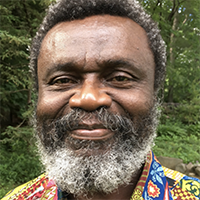
Kwadwo Osseo-Asare, The Pennsylvania State University
For sustained contributions to building a global materials science and engineering community that spans continents from Africa to the Americas
Kεji tsɔ kome kpee kɔɔyɔɔ lε ekuɔ (Ga, Ghana). When a single tree encounters strong wind, it breaks.
In this presentation, Osseo-Asare briefly traced his journey from Achimota School, Ghana, through the University of California, Berkeley, to his current position at The Pennsylvania State University. In his research, the Achimota logo of the piano keyboard has stimulated an attraction to seemingly contradictory systems, e.g., the view that minerals are natural materials and materials are engineered minerals. He shared the motivation behind his interest in exploring the concept of indirection, characteristic of African proverbial discourse as a tool in promoting conceptual understanding and creativity in teaching and learning materials science and engineering. Finally, he celebrated the fact that one cannot do science alone and that science has no boundaries.